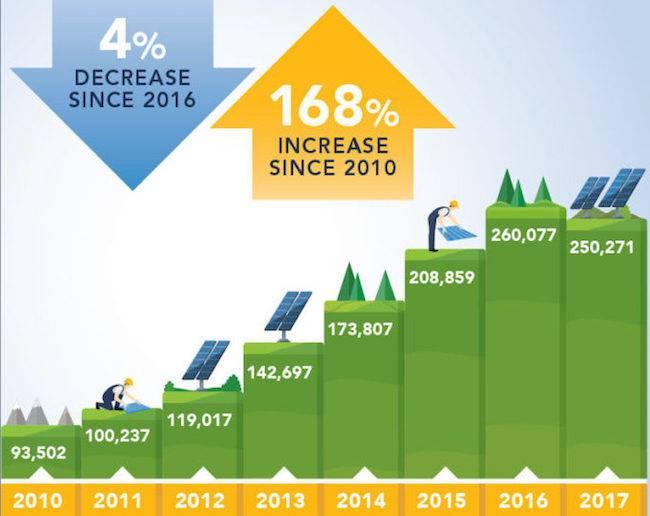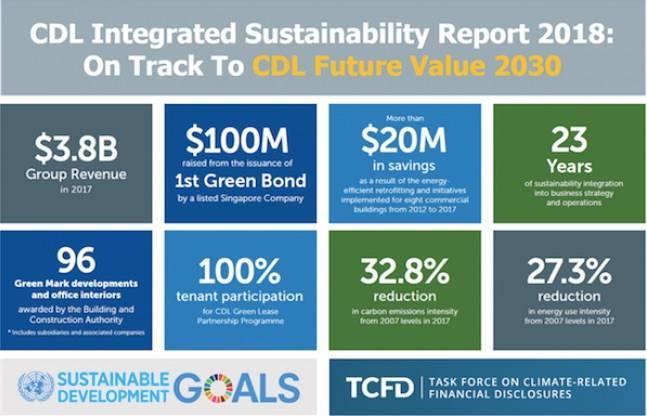How Deloitte Helps Boost Social Enterprise Abroad


Toronto-based nonprofit Planeterra has been able to launch social enterprise projects worldwide in part because of the arrangement it has with G Adventures, the Canadian tour operator that currently organizes trips for over 200,000 travelers a year.
G Adventures has long committed to covering Planeterra’s operating costs, which means that 100 percent of all other public and corporate donations can be directed towards the NGO’s various projects. Funds that other organizations provide to Planterra help support the nonprofit’s programs, with none of those monies going to administrative costs such as technology, human resources or employee training.
One organization that has assisted in supporting Planeterra’s work in recent years is Deloitte.
The global consultancy is among the companies that have participated in Planeterra’s 50 in 5 Campaign, which has aimed to raise $5 million CAD (US$ 3.9 million) to launch 50 new social enterprise projects worldwide by 2020.
The results of Deloitte’s philanthropy, granted without any strings attached, have contributed to Planeterra’s staff being able to make a difference in countries where women often find themselves at an economic and social disadvantage largely due to conventional views about gender roles.
One project that has allowed to thrive in part because of these corporate donations is Women on Wheels, a project in which Planeterra works with Delhi-based Azad Foundation. The program focuses on disadvantaged women from resource-poor urban areas across India to empower them so that they can become professional automobile drivers. The project provides a full suite of training programs so that these women can score the skills and confidence so they become self-sustaining - and in turn, they are often contracted to pick up single women about to travel in the country on a G Adventures tour.
Planeterra says these women working with this program have drastically increased their incomes, often making them the primary breadwinners in their household. Prior to the launch of its partner's training initiative, these families’ average household income was around US $30 for a family of four. But after becoming a chauffeur for Women on Wheels, these same women have seen a ten-fold increase in their monthly income to about US$40 a month.
The result is a more sustainable supply chain: workers are treated fairly and rise out of poverty, while a company such as G Adventures ends up with a differentiated service - leaving all stakeholders better off by this innovative path towards more responsible and sustainable travel.
Image credit: Azad Foundation/Facebook
Automakers: Yes President Trump, There Really Is Such a Thing as Climate Change


U.S. automakers want something from President Trump. No, it’s not lower fuel economy requirements. Environmental Protection Agency czar Scott Pruitt gave that assurance last month. And it’s not a roll-back on emission limits either. That’s in the works as well.
America’s top car makers want Trump to accept that climate change isn’t a “hoax” and that the standards his administration puts into place must take that environmental threat into account.
The Alliance of Automobile Manufacturers (AAM), the industry trade group that represents auto leaders like GM, Ford and Volkswagen,has sent a letter to President Trump urging him to consider the environmental implications of his changes to EPA rulings.
“Climate change is real,” the automakers told Trump.
“Automakers remain committed to increasing fuel efficiency requirements, which yield everyday fuel savings for consumers while also reducing emissions — because climate change is real and we have a continuing role in reducing greenhouse gases and improving fuel efficiency,” said David Schwietert, the organization’s executive vice president of federal government relations.
While this may seem like a “pinch me” moment for environmentalists, there was a larger, economic reason for the organization’s words of caution: the implications of being caught between two different regulatory systems that don’t see eye-to-eye.
The state of California’s own automotive standards are expected to be stricter than the federal guidelines and automakers are currently scrambling to figure out how to address both the federal requirements and the ambitious goals of eco-conscious states.
As of 2016, California had far outpaced other states in the number of vehicles on the road. But that number is quickly changing, says Capitol Tire, which notes that it’s now states with large swaths of rural areas that consistently show more vehicles per capita. California’s home-grown emphasis to decrease emissions and beat climate change impacts falls in line with its effort to tighten up mileage standards – and reduce the number of vehicles on the road.
From the automakers’ standpoint, state and federal disagreements over emission and mileage standards can be a nightmare for car manufacturers, especially when the disagreements end up in court battles. Earlier this month California and 16 other states as well as the District of Columbia sued the EPA over the rollback of greenhouse gas emission regulations for vehicles, setting off what will probably be a protracted session of appeals all the way to the Supreme Court.
Still, California Attorney General Xavier Becerra isn’t mincing words to the EPA. "My message to the EPA and Administrator Pruitt is simple: Do your job. Regulate carbon pollution from vehicles," he said during a press conference. "We are not looking to pick a fight with the Trump administration, but we are ready for one."
And that’s probably why the AAM is now speaking up. Designing new vehicles can take years, if not decades to accomplish, so consensus between regulatory agencies is critical to the corporate bottom line. Ignoring more efficient fuel economy strategies (which prompted consumers to purchase smaller vehicles and leave less economic choices on the lot during the 2008 recession) and all-out battles with the state that often sets many of the standards that other states choose to follow doesn’t bode well for an industry that knows that economics, just as much as climate change, drives the number of cars on America’s roads.
Photo: Flickr / Nayuki
Up, Down Or Sideways: Where Will U.S. Solar Jobs Head Next?


The immediate impact of President Trump's new solar tariff is unclear, but evidence is mounting that solar jobs will continue to increase. That's not necessarily good news for solar job seekers in the manufacturing sector, though. The whole point of the tariff was to increase U.S. manufacturing, but solar companies have been slow to announce plans to open new factories in the U.S.
More to the point, in today's automated, next-generation manufacturing world, new factories don't necessarily lead to a significant jump in jobs. Even a large factory may account for only a few hundred permanent, full time positions.
So, where will all the new solar jobs come from?
Trump administration still foresees more solar jobs
One clue comes from the U.S. Bureau of Labor Statistics, which paints a sunny outlook for the U.S. solar industry -- at least, for solar installers.
Under the category of Solar Photovoltaic Installer, the agency's Occupational Outlook Handbook continues to forecast a ten-year growth rate that significantly outpaces the national average:
Employment of solar photovoltaic (PV) installers is projected to grow 105 percent from 2016 to 2026, much faster than the average for all occupations. The continued expansion and adoption of solar panel installations will result in excellent job opportunities for qualified individuals, particularly those who complete photovoltaic training courses at a community college or technical school.
The agency also lists two factors that make the solar sector attractive to job seekers in construction and similar fields, namely, a decent median salary and an educational requirement of high school diploma or equivalent.
The Solar Foundation also notes that the solar industry is labor-intensive compared to other energy sectors. That makes sense when you consider that solar electricity generation can be scaled down to the size of a rooftop:
Solar makes up just under 2% of overall U.S. energy generation, yet it employs twice as many workers as the coal industry, almost five times as many as nuclear power, and nearly as many workers as the natural gas industry. (These numbers are based on 2016 data, the most recent available for comparison between industries.).
A reality check for solar installers...or not
On the other hand, the BLS outlook may not have assessed the full impact of the new solar tariff. The page lists an update of April 13, barely two months after the tariff took effect.
There were already signals of an industry impact last year. The new tariff was still just in the proposal phase in 2017, but the environment of uncertainty contributed to a drop in solar jobs. According to The Solar Foundation, there were 3.8% fewer jobs in 2017 than in 2016 -- the first such downward movement since the organization began tracking solar jobs in 2010.
The Solar Energy Industries Association also estimated the loss of 88,000 jobs once the tariff took effect. That estimate was later revised down to 23,000 after the particulars of the tariff were revealed in January. That's not quite as bad, but still an unwholesome sign after the six-year run of solid growth from 2010 to 2016.
SEIA also toted up the damages in an April 16 letter to the Trump Administration. According to SEIA,18 solar companies have reported they are planning to scale back their workforce and/or cancel projects that would have added hundreds of jobs.
The Solar Foundation took a different look at the situation. Based on its 2017 solar jobs census, the organization foresaw the potential for a slight increase in 2018, bringing solar jobs back to the record-setting level of 2016.
In April, Utility Dive also solicited insights from a number of utilities that supported the more optimistic outlook.
Tariff or not, here comes solar
The middle ground between the two opinions is that the new tariff almost certainly stalled job growth in the US solar industry for the time being, but did not stop it.
As for the intended effect of the new tariff -- the growth of solar panel manufacturing jobs -- according to SEIA the impact has been "underwhelming."
Only a handful of new projects have been announced so far. The most ambitious one is a facility planned in Florida by JinkoSolar, which would create 200 manufacturing jobs.
The tepid response by manufacturers could have a lot to do with the way the new tariff is constructed. It imposed a 30% tax on imported solar panels in the first year, but that steps down to only 15% by year four. In five years, it will evaporate entirely, providing manufacturers with little incentive to build in the US.
In other words, the results won't be much different from 2012, the last time that the US tried to boost domestic manufacturing with a solar tariff.
In the meantime, solar companies that stockpiled solar panels ahead of the tariff can still offer pre-tariff prices to their customers.
Industry analysts also point out that even during the peak first year of the tariff, a completed solar installation is still far less expensive than it would have been just a few years ago. That's due to an ongoing drop in "soft" costs including labor, permitting, grid hookups and other elements in a solar installation other than the solar panels.
Further drops in the cost of hardware can also make solar a more attractive energy buy than fossil fuels or nuclear. In particular, the Rocky Mountain Institute foresees that emerging pre-fab solar modules will lead to significant cost reductions.
The US business community has been a powerful driver of renewable energy in the US, and that trend shows no sign of stopping.
Most importantly, state and local policy makers can still have a significant impact on solar growth in the US. The Solar Foundation's 2017 census indicates that even as solar jobs dropped on average, there was actually an increase in 29 states.
To top it off, some federal policies still contribute to solar growth, despite the President's well known pledge to bring back coal jobs.
One example is the SolSmart Program, an Obama-era initiative that encourages cities and counties to streamline their processes for solar installations and engage the public in going solar, all with the aim of encouraging job growth.
Image (cropped): via The Solar Foundation.
American Incomes Are More Unstable Than Ever – What Financial Firms Should Do to Help


By Scott Burns
Anna works two jobs and is training for advanced certifications through her local community college. She expects to make over $50,000 this year, but finds her income can jump or fall by as much as $1,000 each month. During income dips, she feels squeezed by her rent, car loan and tuition payments.
Recently, her car broke down and required a repair costing over $600. The stress she felt in scrambling to make payments caused her to miss days of work and class, compounding her money challenges.
She knows she should save for retirement and bigger purchases, but she finds herself mostly applying additional cash to put away for a potentially lean upcoming month.
Anna is fictional, but her circumstances are shared by millions of Americans, whose incomes have become substantially more volatile over the last 40 years.
Ample research highlights the challenges Americans face while grappling with unstable incomes. Documentation ranges from intimate family portraits in books like The Financial Diaries and $2 a Day, to broad studies from the Federal Reserve, bank research groups and widely cited economists at the Economic Policy Institute. Some of the most striking insights include that, according to the Federal Reserve, almost half of American families would struggle to raise $400 in an emergency and JPMorgan’s research indicates that over 40% of households see their income spike or drop by over 30% any given month.
At the same time, a Gallop survey indicates, Americans continue to be deeply distrustful of financial institutions in the aftermath of 2008’s financial crisis and expect more than ever from the services they purchase.
To stay competitive in an era of disruption, financial services providers must go far beyond table-stakes service and apply available technology to help families stabilize their financial lives.
Offerings that help people like Anna will balance risk and reward while making it easier for her to dedicate any temporary surplus to near-term goals:
Blend Stability Into Investments:
Looking at typical financial products, portfolios largely made up of stocks are probably too volatile for short-term savings needs like Anna’s.
While heavily equity-weighted portfolios may be the best way to save over decades, their volatility in any given year can create distress. A person invested fully in an S&P 500 index (without fees) may have seen average real returns of over six percent a year over the last 90 years, but also, on average, would have lost more than 5% of her money at least every 5th year. This would be crippling for someone like Anna, who needs stability in the short-term.
There’s a ‘goldilocks-like’ solution out there that could greatly benefit the millions – one that’s not too risky nor too low-yielding. It would be focused on her goals, with more stability to give her comfort (even if her paycheck movements don’t), but with potentially higher returns than a checking account.
Deliver a ‘Just-Right’ Balance for Clients’ Time Horizons:
A savings vehicle with a 2 or 3 percent yield (still a considerable improvement from typical savings’ account interest rates) could mean hundreds of additional dollars over a five-year period. Including some equity exposure in a savings product for Anna could help boost expected returns, particularly in years further from her goal, with equity share in the portfolio dialed down annually to reduce risk closer to the goal’s end date.
Anna’s ability to bear risk depends on how long she has to reach goals – her investments should fit accordingly.
Make Saving Simple:
To capitalize on related product benefits, Anna also needs help ensuring she steadily puts money away. The successful saving aid she needs would be super easy to use and set up to divert money from many other potential immediate desires -- protecting her future self from impulses to potentially ‘raid’ growing investments. Millions currently rely on analogue versions of such a service, stashing money at hard to reach bank branches or with a trusted partner.
With consumer technology building blocks more powerful than ever, financial firms can and must deliver on products that make it as easy to save as it is to shop online.
Products created to address income instability challenges will do much more to help families reach near-term goals. They will deliver the right blend of stability and reward for families with varying income, make it super simple to save, be appropriate to users’ unique circumstances and driven by a commitment to fiduciary care. Help like this could make once out-of-reach aspirations more accessible for millions grappling with unstable income and uncertain economic situations.
Scott Burns is Head of Analytics and Behavioral Finance, Twine
Salesforce.org to Tell SB’18 How Its New Philanthropy Cloud Helps Redesign The Good Life


This series of articles features organizations that will be speaking at Sustainable Brands Vancouver. Click here for more.
Picture the dog-eared volunteer sign-up sheets that are posted in the breakroom. Or the email that mentions the Google Doc that includes the link to the charity your manager said might interest you. Or that quarterly payroll deduction, the one that you’re sure is for a good cause, even though you don’t remember which one exactly.
Shouldn’t there be a better way to engage with your company’s CSR initiatives?
Now there is. Meet Salesforce.org Philanthropy Cloud, a new social impact network built by Salesforce.org in partnership with United Way Worldwide.
With Philanthropy Cloud, companies can manage all their philanthropic efforts on one network, easily connecting with employees about CSR initiatives, and then tracking progress, motivating participation, and measuring collective impact.
“Companies like Facebook and Amazon have had tremendous success by offering these three things: access, simplicity, and effectiveness,” said Nasi Jazayeri, executive vice president and general manager of Philanthropy Cloud at Salesforce.org. “Our goal was to bring those same principles to philanthropy.”
Work on Philanthropy Cloud started in August 2017. For years, Salesforce had been hearing from others looking to replicate its “1-1-1” initiative, a pledge to donate 1% of equity, 1% of products, and 1% of employee time to charitable causes.
“85% of Salesforce employees are engaged in giving back ,” Jazayeri explained. “After fielding questions for years, we asked ourselves what we could do to help our customers, partners, and others drive that same kind of engagement.”
The answer centered on technology.
“It took 16 years for Salesforce to get to one million volunteer hours, but it took us 16 months to get the next one million hours,” Jazayeri said. “It’s not just about engagement. It’s about technology. It’s about giving people access, simplicity, and effectiveness.”
Philanthropy Cloud uses Salesforce Einstein artificial intelligence to connect employees with causes and opportunities based on their philanthropic interests, location, and preferences. The most relevant options are presented on a profile page that’s part social networking app, part workplace dashboard.
“You are not an island. You’re a network,” Jazayeri said. “And when you engage your network, your volunteer efforts can have a much greater impact. When you’re not siloed, the effect can be exponential.”
This April, Philanthropy Cloud was piloted across a handful of large corporations. It will be generally available June 29.
For companies, Philanthropy Cloud offers a better way to manage giving, volunteering, and eventually, company grant management, Jazayeri explained.
“They’ll be able to get a 360-degree view across the whole company, which will improve alignment with content, goals, and reporting,” he said.
Plus, corporate brand identities can be added, and since all of the opportunities presented are tagged with specific United Nation’s sustainable development goals, companies will have a new way to build awareness and say, “This is who we are, and this is what we care about,” Jazayeri said.
"Today's CSR isn't just about community impact,” said Jazayeri. “It's also about marketing and HR," he added. "Companies now use CSR to inspire their employees to the next level, build their brands, and help acquire, retain and develop talent."
For today’s socially-conscious employees, Philanthropy Cloud offers access to relevant content and an easy way to keep track of upcoming events, donations, and volunteer time. In the future, Philanthropy Cloud profiles will be portable, so even if an employee leaves their job, they’ll be able to stay connected to the causes they care about.
Attendees at SB'18 Vancouver will have several opportunities to learn more about Philanthropy Cloud. Jazayeri and members of his team will be demonstrating the new platform at booth 1,000 in the activation hub on June 5th and 6th; they’ll also be delivering a keynote in the activation hub at 6:35 p.m. on June 5 and participating in a panel discussion on June 6.
“The theme of Sustainable Brands ’18 is ‘redesigning the good life,’ and that is what Philanthropy Cloud is all about,” Jazayeri concluded. “We’re taking CSR to the next level with a platform that drives awareness, action, and impact. We all know that doing good allows you to do well, to have a good life. Philanthropy Cloud is where all those things come together.”
Häagen-Dazs Loves Honey Bees


This series of articles features organizations that will be speaking at Sustainable Brands Vancouver. Click here for more.
If you’ve ever wanted a bee’s-eye view of what life is like for the planet’s hardest working pollinators, then check out the new virtual reality video experience "The Extraordinary Honey Bee" developed for Nestlé’s Häagen-Dazs brand.
The award-winning five-minute video follows Alex the worker bee on her journey through an almond orchard as she explains the importance of bees to the world’s food supply and describes the threats facing bee populations from our modern farming practices.
The plight of the honey bees and many other pollinator species has come into sharp focus in recent years. One third of the world’s food supply depends on pollination, but many species are experiencing significant decline or even extinction due to habitat loss and exposure to pesticides and disease.
While governments around the world continue to debate the causes and cures for the problem, many corporations and NGOs are stepping up to raise awareness and take action.
The Häagen-Dazs brand, for example, has been busy since 2008 when it launched its Häagen-Dazs Loves Honey Bees program. Over the past ten years, the company has donated more than $1 million to honey bee research, educated consumers around pollinator issues, and worked with suppliers to adopt pollinator-friendly farming practices.
Taken together, all this work puts them “very much at the forefront of pollinator conservation in the corporate arena,” according to conservation specialist Cameron Newell from the Xerces Society, a leading NGO in this area.
And no wonder, considering that ingredients in 26 different Häagen Dazs flavors now rely on pollinated crops. A world without bees means a world without flavors like Rocky Road, Vanilla Swiss Almond, and Coconut Caramel.
For Rachel Jaiven, the Häagen-Dazs Brand Manager, the equation is simple. “Any risks to the bee population is a risk to our products, so over the past ten years we’ve really tried to focus on bringing awareness to the importance of honey bees but also trying to make sure that our work with our suppliers is helping those populations survive and grow,” she said.
The brand’s work with suppliers includes creating year-round habitat. In 2017, Häagen-Dazs installed one of the country’s largest, privately funded pollinator habitats on an almond farm in California’s Central Valley. The habitat spans 6.5 miles of hedgerow and 28 acres of understory habitat with native drought-tolerant shrubs and flowering plants that are attractive to pollinators. In total, the project impacts 840 acres of farmland.
The brand’s second pollinator habitat is being planted on the farm of one of its strawberry suppliers in Oregon.
For both these projects, Häagen-Dazs partnered with the Xerces Society. “We had to bring in outside specialists and agronomists where needed, expert organizations like Xerces Society, to really help inform what we do in our supply chain and how we educate and support our individual suppliers,” said Jaiven.
In fact, the brand is working toward the Xerces Bee Better certification, a new third-party verified standard that requires creating large pollinator habitat areas on farms and eliminating harmful pesticide practices.
Oregon Tilth, a nonprofit organization that promotes organic and sustainable growing practices, is the third-party agency certifying Bee Better farms and products. The list of pesticides includes those considered moderately and highly toxic to pollinators by the US EPA, according to Cameron Newell who is the Bee Better Certified coordinator for Xerces.
Brands that achieve this certification can place the Bee Better seal on their packaging to indicate the ingredients were grown and harvested in a bee-friendly manner.
Over the last ten years, Häagen-Dazs has learned a thing or two about how to launch and sustain initiatives like this and how to reach consumers with their message, said Jaiven. And the best way to reach consumers is “as close to the product experience as possible,” she believes.
And you can’t get much closer to the consumer than the recent Free Cone Day pop-up event at Häagen-Dazs retail shops featuring all the bee-friendly flavors. Anyone who stopped by the shop got a free ice cream cone and got an education on the brand’s ten-year involvement with bee conservation. Members of the Häagen-Dazs Shops corporate team were at some of the stores helping people download and view “The Extraordinary Honey Bee” video.
“Consumers want to know that your brand stands for more than one thing; they want to know that you are supporting something bigger than just selling products,” she said, “so in-person interactions at the shops are a great way for us to talk about this work.”
Jaiven said the brand also received a tremendous amount of coverage for the event and gave away some 325,000 scoops on the day, up from 310,000 the year before.
Another touchpoint with consumers is on the product packaging. A “Häagen-Dazs Loves Honey Bees” symbol on the packaging of bee-friendly flavors allows consumers to make an immediate connection and bring awareness to the issue, said Jaiven, and “it gives consumers confidence that their purchasing decisions benefit pollinators.”
Nestlé is a sponsor and will be exhibiting at the upcoming Sustainable Brands 2018 conference June 4-7 in Vancouver, where the theme is redesigning product and service offerings for the “The Good Life.” So how does the Häagen-Dazs brand’s work with honey bees fit this theme?
According to Jaiven, “It’s always been important for us to consider quality and deliver the best ingredients and taste experience for our consumers. When we think about the good life, it’s about consumers enjoying our products today but also knowing these quality ingredients will be around for generations to come and that’s all about the work we are doing with honey bees.”
If you’re attending SB’18, stop by their booth to taste the new flavor created to commemorate the 10-year anniversary, Honey Salted Caramel Almond. Also, don’t miss the chance to view “The Extraordinary Honey Bee” with the latest, state-of-the-art virtual reality headsets.
3BL Media is a Major Media Partner for SB’18 Vancouver. As a valued member of the community, you can receive 20% off a pass of your choice with code ‘JoinUs’. Learn more about SB’18 Vancouver and register today.
How Enel Group's Focus On Renewable Energy Leads To Next-Level CSR


The multinational energy company Enel Group gets high marks for its aggressive pursuit of renewable energy and for its corporate social responsibility profile, and now it has embarked on a mission that combines those two areas into a single initiative. Earlier this month Enel announced a challenge-based initiative aimed at motivating global innovators to help the company meet its four UN Sustainable Development goals, in the fields of education, energy, economic opportunity and climate action.
With this new initiative, Enel recognizes that renewable energy companies can become powerful forces in social progress, by linking technological improvements to a business model that supports shareholder value as well as social benefits.
Crowd sourcing sustainable development
The platform for the new initiative is a partnership with the crowdsourcing expert InnoCentive, which has developed a methodology it calls Challenge Driven Innovation.
Once the challenges are identified, InnoCentive distributes them to its Solver network of 380,000 professionals in the c
In addition to cash prizes for challenge winners, Enel anticipates creating new partnerships through the exercise.
Ernesto Ciorra, Enel’s Head of Innovability, explains how innovation and the four Sustainable Development Goals come together:
Through this partnership, we are reaffirming our practice of embracing ‘innovability,’ bringing together innovation and sustainability, to address technological challenges whose solutions are expected to create value for Enel while tackling some of the world’s major issues...This is yet another example of the intrinsic relationship between innovation, sustainability and value creation, for us and our stakeholders.We cannot create value for ourselves if we do not create sound economic and social conditions for our stakeholders...
Whatever the solutions are, they have to deliver in terms of concrete numbers. Enel's Sustainable Development goals are numerical targets:
Enel has committed to achieve, by 2020, 800,000 beneficiaries under SDG 4; 3 million beneficiaries mainly in Africa, Asia and Latin America, under SDG 7; 3 million beneficiaries under SDG 8 and CO2 emissions lower than 350gCO2/kWheq under SDG 13.
Enel has made significant progress, but it must ramp up its efforts to hit its marks. As of last year the numbers were, respectively: 600,000 beneficiaries, 1.7 million beneficiaries and 1.5 million beneficiaries, and its CO2 emissions rounded out to 400 g/kWheq.
Crowdsourcing for progress on renewable energy
This is not the first time Enel has paired up with InnoCentive to solve technological challenges.
In 2015 a partnership with the company's Enel Green Power subsidiary focused on five areas that apply to renewable energy, including the use of drones and satellites for constructing power plants; automated systems for assembling solar arrays; systems for cleaning solar panels that save water and fuel; technology to combat ice on wind turbines; and more efficient methods for identifying good locations for geothermal wells.
This new round of challenges could take Enel into some interesting new territory that intersects with renewable energy.
For example, Enel has been working on a pilot project with Italy's Consortium for the Development of Geothermal Areas, which involves growing the "superfood" spirulina algae in greenhouses provided with geothermal heat from the company's Chiusdino plant.
The initial aim is to provide a high density, low weight food for astronauts, but if grown at scale spirulina could also fulfill nutritional and medicinal needs on Earth.
Triple Pundit spoke with Enel's Head of Sustainability, Andrea Valcalda, in 2016; then, she provided some insights into how renewable energy innovation can drive sustainable development.
To cite just one example (follow the link for more), Enel is involved in a distributed solar project in Kenya that will provide electricity for 20,00 households totaling about 90,000 people. The project includes an innovative phone app to provide for ease and reliability of payment.
Innovation in financing for renewable energy projects is another element that could come into the latest challenge, along with energy affordability and efficiency. Enel's recently announced energy storage project for rail systems could also indicate an interest in that area.
Crowd sourcing innovation
In addition to the newly announced round of challenges, Enel extends an ongoing invitation to innovators through its Open Innovability platform, which provides a digital archive of pathways for achieving targets for Sustainable Development Goals.
Enel elaborates on the innovation-based strategy:
After decades of stagnation, the energy system is changing at an increasingly rapid pace, thanks to such factors such as technological evolution, a force that can drastically change entire business segments, while opening up great opportunities for development.[snip]
...in line with its Open Power strategic positioning, Enel has placed sustainability and innovation at the heart of its business strategy. These two factors are fundamental to help meet some of the most important challenges the world is facing. Which is why we have coined the term Innovability – by combining innovation and sustainability – and created a dedicated function within our organisation.
Circling back to the Sustainable Development Goals, it's no accident that Enel's new challenge focuses on meeting just four of the 17 goals outlined by the United Nations. All four -- education, energy, economic opportunity and climate action -- are necessary elements if the decarbonized economy of the future is to include populations that have been left behind in the age of fossil fuels.
Photo (cropped): via Enel Group.
Alaska Airlines Joins The War on Plastic Straws, But Does it Matter?


The battle to eliminate plastic straws has ratcheted up a notch with Alaska Airlines' recent announcement that they are doing away with the near useless stirry straws typically served with in-flight drinks and almost invariably lost beneath one's seat. The move comes with a PR blitz and a fair amount of online pontificating among sustainable types, not to mention a very successful press response.
To put this all in context, Alaska gave out more than 20 million straws and "citrus picks" in 2017 alone. Once the plan is in place, the airline will still offer wooden stir sticks, though only when requested.
Yesterday I found myself in the midst of a debate among friends on the context of Alaska's move and whether it was really a "big story." One camp firmly stood by the notion that any progress is good progress. The move might have a small impact on an airline's carbon footprint, but If it got passengers thinking about their waste stream and the plague of plastic that now fills our oceans and even bodies then Alaska deserves all the praise they get. Judging by the comments on their facebook page, that praise is rolling in.
Another camp said, hold on a minute. If folks are asked to feel good about not using one crummy straw, it may have the ironic effect of letting them off the hook when it comes to more serious issues. The argument concerns the concept of "mindshare" - basically the fact that people can keep track of a limited amount of information on any given topic at any time. In other words, spending time getting people excited about the elimination of plastic straws on their flight may distract them from taking more serious action on bigger issues because they simply can't keep that much attention on the subject.
I was asked to look up "moral credential bias" on the interwebs. Indeed, research suggests that there are situations where past 'good behavior' can often serve as a substitute in people's minds for future 'bad behavior.' To take it to an extreme, the logic in this case might be, "Well, I gave up that straw, so I think I'll buy a bigger SUV." Perhaps, though hard to prove. To get my head back on straight I talked to Bobbie Egan at Alaska who added a bit of history to the latest policy. The push to cut straws from flights was motivated about a year ago by a 16 year old airline fan who wrote to Alaska asking them to cut plastic waste. Additional help from non-profit organization Lonely Whale, and a large number of Alaska employees solidified into policy and has been widely welcomed into the company's existing sustainability efforts. No one at the airline is under the delusion that eliminating straws is a monumental achievement. It's rather seen as an incremental step in a long list of improvements, some bigger than others. The fact that this happens to be a fairly publicly facing change makes it a special opportunity to reach passengers and the wider public.Less plastic waste is always a good thing. More public awareness about plastic alternatives is too. And you might say that the fact that this heated debate is happening is proof enough that Alaska's move has provoked a valuable conversation. Does Alaska deserve a gold medal for ditching straws? Maybe not, but I think they certainly still get credit where it's due.
Finding a downside to this one is like grasping at straws. (image c/o Alaska Airlines)CDL Integrates ESGs into Strategy and Practices


Energy use has been cut by 27.3 per cent in ten years by CDL, the Singapore-based, global real estate company.
The group, which has a presence in 26 countries, reports it has hit its 2030 target of a 25 per cent reduction 12 years ahead of time.
The reduction is one of a list of achievements in CDL’s 2018 integrated sustainability report. To flesh out its claim, the company reports that energy efficiency and other measures cut electricity bills by more than S$20m ($15m, £11m, €12.5m) between 2012 and last year at eight of its managed commercial buildings.
During the same period, CDL’s overall carbon dioxide emissions fell by 32.8 per cent putting the company well on track to meet its 2030 target of 38 per cent.
More progress is flagged up for the Green Mark certification awarded for premises by the Building and Construction Authority of Singapore. Altogether 75 per cent of CDL buildings now carry the mark, placing the company ahead of the game to reach its 2030 target of 80 per cent.
In the past year the group has expanded its stakeholder involvement by issuing Singapore’s first Green Bond and raising S$100m for its green building efforts.
With its 2018 report, CDL has become one of the first Singapore companies to publish voluntarily its disclosures in the key areas of governance, strategy, risk management, metrics and targets, as recommended by the Task Force on Climate-related Disclosures, the advisory body set up by the G20.
It intends this year to complete a study assessing climate risks and opportunities in its main operations as an aid to managing the financial impacts of its climate policy.
A comprehensive study has been conducted to reassess the environmental, social and governance issues in the report. CDL listened to 160 stakeholders and an expert panel of senior representatives from international ethical organizations.
Sherman Kwek, the CDL group chief executive, said: “Sustainability is fast becoming the norm throughout the business ecosystem. From a very early stage, CDL has recognized the importance of ESG integration. For more than two decades, we have incorporated sustainability into our business and operations to future-proof our business and unlock value.
“More than just a developer of living and working spaces, we have striven to be a builder of lives and communities. Our long-standing commitment to innovation and green building has distinguished CDL as a trusted eco-developer and differentiated our products.”
The Case For Renewable Hydrogen: California Takes The Lead


The hydrogen economy of the future has been tempting researchers for decades with the promise of cheap, abundant, zero emission fuel. Now, finally, hydrogen fuel cells and fuel cell electric vehicles are slipping into the mainstream. That's all well and good, but the hydrogen economy will not be a sustainable one until renewable hydrogen enters the scene.
The problem is that the primary source of hydrogen today is natural gas. The good news is that multiple sources of renewable hydrogen have been identified, and a new report from the organization Energy Independence Now (EIN) provides a good rundown on the emerging options.
The renewable hydrogen challenge
The "Renewable Hydrogen Roadmap" report was produced by EIN in partnership with the Leonardo DiCaprio Foundation and the California Hydrogen Business Council.
The report focuses on meeting California Governor Jerry Brown's goal of 5 million zero-emission vehicles on the road in California by 2030, and 200 hydrogen stations by 2025.
That's a pretty tall order. California is one of several U.S. states that have been aggressively pursuing the hydrogen economy, but even so its roster of hydrogen fuel stations only adds up to a current list of 35.
Now add the need to produce and transport vast quantities of renewable hydrogen to supply those 200 stations, and you have a real challenge on your hands.
Why hydrogen?
In terms of decarbonizing the California transportation sector, the new EIN report offers several arguments for including renewable hydrogen rather than relying exclusively on battery electric vehicles.
One main benefit cited by EIN is flexibility. The report notes that hydrogen acts as both a storage medium for renewable energy and a fuel:
Hydrogen has the unique potential to connect the clean energy systems of the future by allowing storage of renewable energy that can be used to fuel transportation, generate heat for industrial processes and send electricity to the grid.
Another factor involves leveraging hydrogen to help meet a proposed 100% clean energy mandate in California, which is currently under debate in the state legislature:
...the California Legislature is currently considering SB 100, which would establish an overall state target of 100% clean energy for California by 2045, while accelerating the interim benchmarks of 50% by 2026 and 60% by 2030. Due to the intermittent nature of wind and solar, the state simply cannot reach 100% renewable without energy storage. Similarly, due to the range, size and recharging limitations of battery electric vehicles, FCEVs are a necessary component of the state’s ZEV goal.
Scaling up renewable hydrogen
EIN notes that industry stakeholders have already been gearing up for a sharp increase in renewable hydrogen production, due to a previous California mandate of 33.3% renewable hydrogen for the state's publicly funded fueling stations.
The organization further notes that industrial hydrogen has already scaled up for oil refining and ammonia among other uses. Elements of that infrastructure could be applied to scaled-up renewable hydrogen production as well.
As for sources, the report identifies more than a baker's dozen of potential pathways for renewable hydrogen in California, including biomass, solar thermal, photovoltaic, wind, geothermal, fuel cells using renewable fuels, small hydroelectric generation (30 megawatts or less), digester gas, municipal solid waste conversion, landfill gas, ocean wave, ocean thermal, and tidal currents.
So much for the good news
Getting from opportunity to commercial production is a bumpy road, though. For each source, the report identifies both benefits and challenges.
Biogas is an especially interesting example because it underscores how renewable energy technology can provide environmental benefits beyond decarbonization.
For example, EIN notes that the agriculture industry is responsible for almost 60% of methane emissions in California. The state's 1,400 dairy farms contribute a significant amount to that total, due to the practice of storing animal waste in open lagoons. Those lagoons could be capped to capture the gas, which could then provide a renewable feedstock for hydrogen production.
Additionally, dairies could be encouraged to install digesters, which provide a more efficient way to produce gas from animal waste. Both lagoon caps and digesters would help reduce local air, water and soil impacts from animal waste, while cutting down on greenhouse gas emissions from dairy operations.
In taking stock of the challenges, though, EIN foresees that a significant increase in public support would be needed to scale up hydrogen production from biogas in California:
...only 13 digesters currently operate in the state, with another three under construction. Today, no dairy digester projects generate hydrogen from biogas in California. The current projects use biogas to generate electricity, or for combined heat and power generation.
Nevertheless, the potential for scaling up does exist. EIN cites a report from the National Renewable Energy Laboratory:
NREL calculates that 486,000 tonnes of hydrogen could be generated annually from dairy digesters throughout the US, not including existing systems. Further analysis shows that 8 of the top 14 counties in the U.S. with the highest hydrogen production potential from animal manure are in California and could generate 72,300 tons of hydrogen annually.
Getting consumers on board
The EIN report also warns that some potential opportunities -- electrolysis with renewable energy, for example -- are not recognized under current federal policies for the purposes of tax credits and other financial benefits.
Even assuming that policy changes can accommodate additional sources for renewable hydrogen, the business case still needs to be made:
Ultimately, in order to sway consumers,renewable hydrogen needs to be cost competitive with gasoline (and conventional hydrogen) on a per-mile basis. Until consumers are either forced to shoulder the indirect costs of fossil fuels (or dramatic increases in oil prices) and/or policy makers increase incentives for alternative fuels,hydrogen must be priced comparably to gasoline to achieve rapid market growth as a transportation fuel.
The fuel could be free (some auto manufacturers are currently giving it away), but the cost of fuel cell vehicles also needs to come down. State tax incentives, income-eligible rebates and other benefits are still operational in California, but an $8,000 federal tax credit expired after 2016 and was not renewed.
The business case for renewable hydrogen
The good news is that several companies are already focusing on the renewable angle when adopting fuel cells.
One is the hydrogen fuel cell electric semi truck start-up Nikola. The company's business model is based on fueling stations that produce hydrogen by "splitting" water through electrolysis, with an electrical current provided by wind or solar power where available.
Nikola launched for pre-orders in 2016 and the concept quickly took hold, even under competition from Tesla's new battery electric truck. A recent pre-order of up to 800 Nikola fuel cell trucks from beer giant Anhueser Busch could spark additional interest.
7-11 is also ahead of the renewable H2 curve, with a little help from Toyota. The two companies have combined forces to introduce fuel cell electric delivery trucks fueled with hydrogen produced on site.
On the biogas angle, back in 2015 IKEA inked a deal with the company Bloom Energy for its "Bloom Energy Server" stationary fuel cells. Though the fuel cells themselves are fuel-agnostic, IKEA opted for the biogas pathway. As of last year the company had biogas fuel cells installed at five locations in California.
Circling back around to the report, it seems clear that the hydrogen economy is already taking shape. The main issue now is how to accelerate its growth while decarbonizing, and that will require some heavy lifting by policy makers and taxpayers.
Image (screenshot): EIN via squarespace.